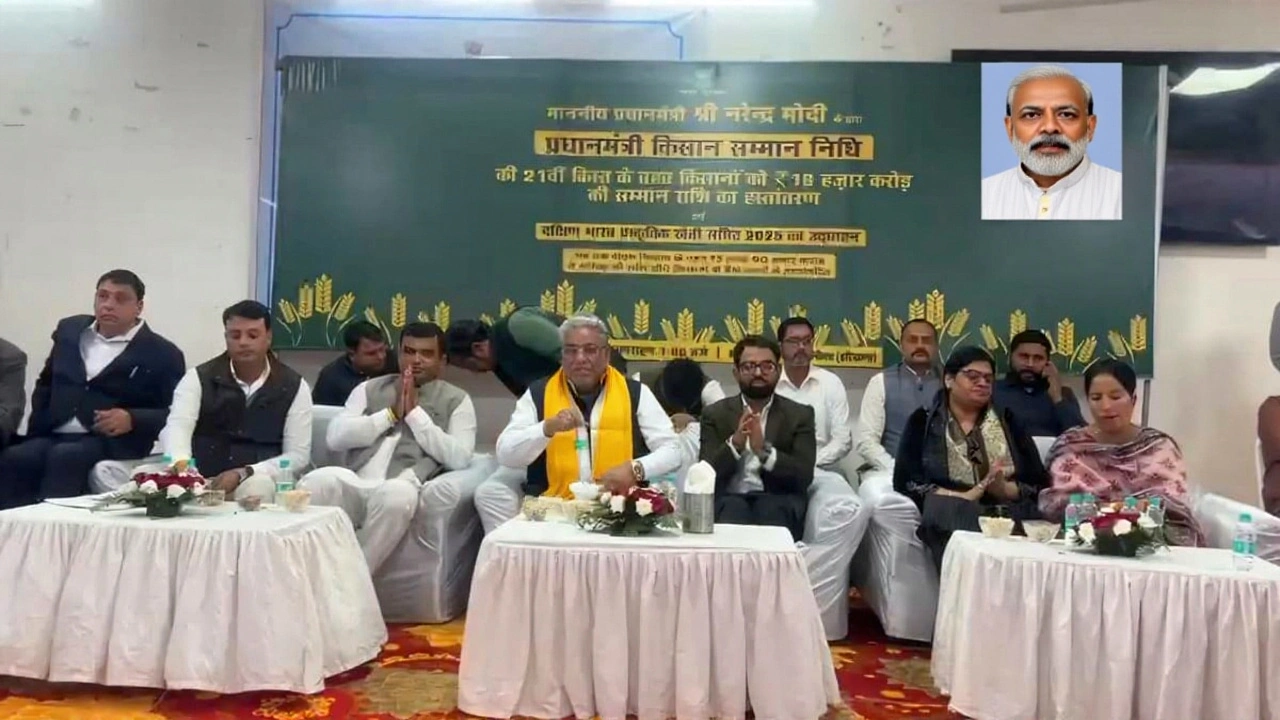PM Modi Disburses ₹2,000 to 9 Crore Farmers as PM Kisan’s 21st Installment Hits Accounts

On Wednesday, November 19, 2025, at 2:00 PM IST, Narendra Modi transferred ₹2,000 directly into the bank accounts of nearly 9 crore farmers across India, marking the 21st installment of the Pradhan Mantri Kisan Samman Nidhi (PM Kisan) scheme. The funds, totaling ₹18,000 crore, were disbursed from Coimbatore, Tamil Nadu — a symbolic choice, as the day also coincided with Kisan Diwas, India’s annual celebration of farmers. The Ministry of Agriculture and Farmers Welfare had pre-announced the transfer via official social media channels, ensuring transparency and widespread awareness. For millions of small and marginal farmers, this isn’t just cash — it’s lifeline money, often used to buy seeds, pay off debts, or cover school fees for children.
Early Disbursement for Flood-Affected Regions
But here’s the twist: farmers in Jammu & Kashmir, Punjab, Himachal Pradesh, and Uttarakhand received their 21st installment nearly six weeks earlier — on October 7, 2025. In Jammu & Kashmir alone, ₹170 crore reached 8.5 lakh farming households, fast-tracked after devastating floods wiped out crops and infrastructure. Officials confirmed the early payout was an emergency relief measure, not an administrative error. "We didn’t wait for the national schedule," said a senior ministry official. "When your fields are underwater, you don’t wait for a calendar." This prioritization reflects a growing trend: targeted, region-specific interventions within national schemes.
How the Scheme Works — And Who Gets Left Out
Launched in December 2018 and rolled out fully in 2019, PM Kisan provides ₹6,000 per year — paid in three equal installments of ₹2,000 — to landholding farmer families. The money lands directly in their bank accounts via Direct Benefit Transfer (DBT), cutting out middlemen and reducing corruption. To date, over ₹3.70 lakh crore has been transferred to more than 9 crore beneficiaries. But eligibility is strict. Farmers with annual taxable income above ₹10 lakh, government employees, pensioners, and those owning more than five acres of land are excluded. "This isn’t universal welfare," explained Dr. Meera Khanna, an agricultural economist at Delhi University. "It’s precision support — meant for those who need it most, not those who can afford to wait for monsoon rains."

Why the Portal Matters — And What to Do If You Didn’t Get Paid
For farmers who didn’t receive the ₹2,000 on November 19, the answer lies at pmkisan.gov.in. The portal allows users to check payment status, update bank details, and verify e-KYC compliance. Many delays stem from outdated Aadhaar linkage or unverified mobile numbers. The ministry advises affected farmers to complete biometric authentication if their e-KYC is pending. "We’ve seen cases where farmers received payments months late simply because their phone number hadn’t been updated since 2020," said a field officer from Bihar. The government has set up over 50,000 Common Service Centers across rural India to assist with these updates — free of charge.
A National Symbol, One Installment at a Time
Modi’s decision to launch each installment from a different state — this time from Coimbatore, last time from Varanasi in August 2025 — isn’t just ceremonial. It’s political theater with real purpose: to remind every region that they’re seen. It also helps the government track regional disparities. In 2024, for instance, payments in Odisha and Jharkhand lagged due to poor banking penetration, prompting a mobile banking drive. The scheme’s success is measured not just in rupees, but in rural confidence. "Before PM Kisan, I’d borrow at 36% interest to plant my crop," said Suresh Kumar, a rice farmer from Madurai. "Now, I plant first, pay later. That’s dignity."

What’s Next? The Road to 2026
The 22nd installment is expected around February 2026, just before the Rabi season begins. Rumors swirl that the government may raise the annual support from ₹6,000 to ₹8,000, especially with state elections approaching in several key farming states. But experts warn: without structural reforms — better irrigation, fair MSPs, and access to credit — cash transfers alone won’t break the cycle of debt. "PM Kisan is a band-aid," said former NITI Aayog member Dr. Rakesh Mohan. "But sometimes, when the wound is deep, a band-aid is all you have — and it’s better than nothing."
Frequently Asked Questions
How can I check if I’ve received my PM Kisan payment?
Visit pmkisan.gov.in, click on "Farmer’s Corner," then "Beneficiary Status." Enter your Aadhaar number, bank account, or mobile number. The portal shows payment history, last credited amount, and whether your e-KYC is complete. If your payment is pending, check for mismatches in your bank details or Aadhaar linkage.
Why didn’t I get the ₹2,000 even though I’m a farmer?
You may be ineligible if your family owns more than five acres, has an annual taxable income over ₹10 lakh, or if you’re a government employee or pensioner. Even if you qualify, incomplete e-KYC or mismatched bank details can block payments. Many farmers miss out because their Aadhaar isn’t linked to their bank account — a simple fix via the nearest Common Service Center.
How much total money has the government distributed under PM Kisan so far?
As of November 2025, the government has transferred over ₹3.70 lakh crore to more than 9 crore eligible farmer families since the scheme’s inception in 2019. The 21st installment alone accounted for ₹18,000 crore, making it one of the largest single-day cash transfers to rural households in India’s history — larger than the annual budget of several small nations.
Are farmers in Jammu & Kashmir treated differently under this scheme?
Yes — during crises, they are. In October 2025, J&K farmers received their 21st installment six weeks ahead of others due to post-flood devastation. The government treats disaster-affected regions as priority zones, often accelerating payments without waiting for the national schedule. This flexibility has been praised by local leaders but also raises questions about equity across states.
What happens if I don’t complete e-KYC?
Without completed e-KYC, your payments will be suspended. The government requires biometric authentication via Aadhaar to prevent fraud and duplicate claims. Farmers can complete this at any Common Service Center, post office, or bank branch with Aadhaar enrollment facilities — no fee involved. Over 1.2 crore farmers had pending e-KYC as of October 2025, but more than 80% have since resolved it after government outreach campaigns.
Is there a plan to increase the PM Kisan amount in 2026?
While no official announcement has been made, insiders suggest the government is considering raising the annual support to ₹8,000 from ₹6,000, especially ahead of 2026 state elections in major agricultural states like Punjab, Uttar Pradesh, and Maharashtra. Budgetary constraints and inflation pressures are being weighed, but political momentum is strong. Even a modest increase could lift millions above the poverty line.
